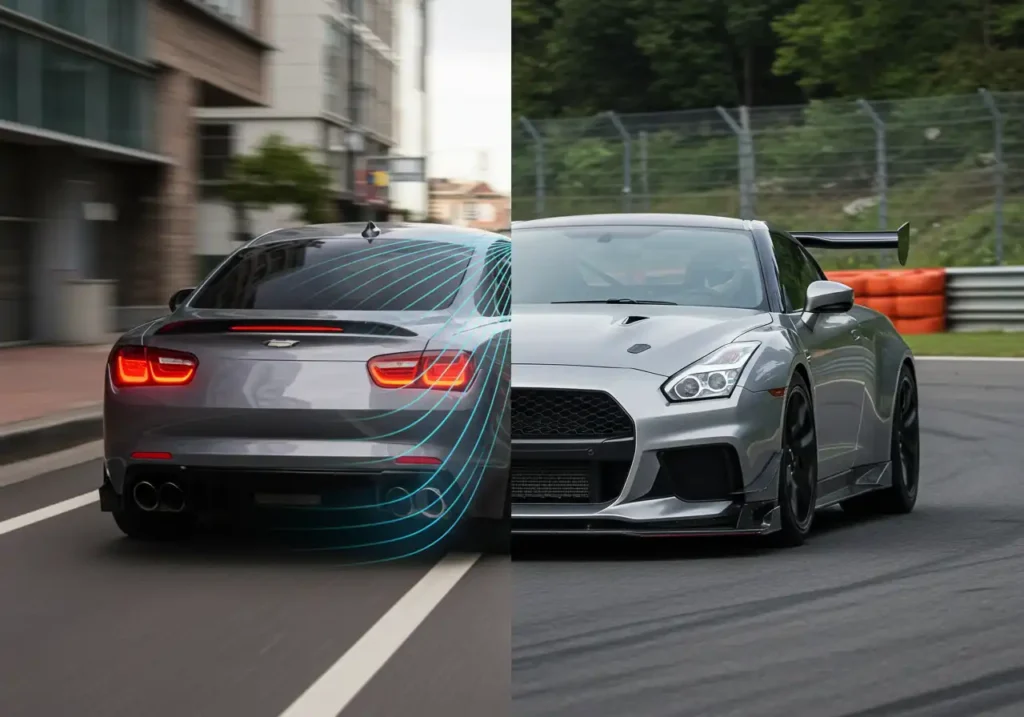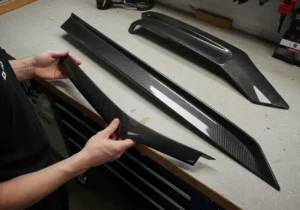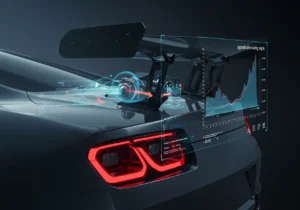Car enthusiasts often debate whether aftermarket aerodynamics are truly functional or merely cosmetic. While it’s true that some drivers add spoilers, wings, and diffusers simply for style, 2025 is proving to be the year where aerodynamics are more than just looks. Thanks to new materials, computational design tools, and active aerodynamic technologies, the aftermarket aerodynamics industry in the U.S. is booming. For anyone serious about performance, handling, and safety, aerodynamics are now a must-have upgrade.
Why Aerodynamics Matter
Aerodynamics is the study of how air flows around a vehicle. Poor airflow creates drag, which reduces efficiency and speed. Smart aerodynamic design improves:
- Downforce – Presses the car down on the road for better grip.
- Drag reduction – Minimizes resistance, improving top speed and efficiency.
- Stability – Keeps cars steady at highway and track speeds.
- Cooling – Directs air where it’s needed most, like brakes or radiators.
In performance driving, even small aerodynamic improvements can shave seconds off lap times or make daily highway driving feel more controlled.
What’s New in 2025 Aero Tech
Aftermarket suppliers are embracing cutting-edge technology once reserved for high-end supercars. In 2025, we’re seeing:
1. Active Aero Kits
Borrowed from Formula 1 and hypercars, active aerodynamics adjust in real-time. Rear wings change angles at different speeds, diffusers expand or contract, and vents open to direct airflow only when needed. Several aftermarket companies are now producing affordable active aero kits compatible with popular sports cars and even some sedans.
2. 3D-Printed Aero Parts
3D printing is revolutionizing customization. Instead of waiting for a one-size-fits-all kit, enthusiasts can now print lightweight spoilers or side skirts tailored to their vehicle. This allows for affordable, precise modifications that also reduce waste.
3. Carbon Fiber and Composite Materials
Weight is the enemy of performance. In 2025, more aftermarket aero parts are being made from carbon fiber and advanced composites. These materials provide strength without adding significant weight, making them perfect for wings, diffusers, and splitters.
4. Wind-Tunnel Tested Street Kits
Previously, only racing teams had access to wind-tunnel validation. Now, aftermarket manufacturers are using computational fluid dynamics (CFD) and scaled wind tunnels to test aero kits designed for everyday drivers. This means the upgrades aren’t just for style—they are proven to improve handling and efficiency.

Street vs. Track: Choosing the Right Aero Upgrades
Not every aerodynamic mod is right for every driver. Street cars and track cars require different setups:
For Street Driving
- Subtle spoilers and lip kits that reduce drag.
- Diffusers that improve stability at highway speeds.
- Side skirts to smooth airflow around the car body.
Street aero focuses on efficiency and safety rather than maximum downforce.
For Track Driving
- Large adjustable wings for cornering grip.
- Splitters and canards to direct airflow at high speeds.
- Brake cooling ducts to manage heat under extreme conditions.
On the track, aerodynamic drag is less of a concern compared to downforce and cooling benefits.
Do Aerodynamic Upgrades Affect Fuel Economy?
Yes—sometimes in a good way, sometimes not. A lip spoiler may reduce drag, improving efficiency by 2–3% at highway speeds. However, aggressive wings designed for track use may slightly reduce fuel economy because they create downforce at the cost of drag. That’s why balance is essential when choosing parts.
 Best Aftermarket Aero Upgrades in 2025
Best Aftermarket Aero Upgrades in 2025
Here are the aftermarket parts making waves this year:
- Adjustable Rear Wings – Affordable active aero with street-legal modes.
- Functional Diffusers – Improving rear stability and airflow under the car.
- Carbon Fiber Splitters – Lightweight front-end upgrades that increase downforce.
- Side Skirts – Reduce turbulence and improve lateral stability.
- Aero Wheels – Designed with wind-tunnel input to cut drag.
Installation and Fitment Considerations
Before buying an aero kit, consider:
- Fitment: Poorly fitting parts increase drag instead of reducing it.
- Materials: Carbon fiber is best for performance; ABS plastic works for budget builds.
- Professional installation: Some upgrades require drilling, trimming, or precise alignment.
Always ensure aftermarket parts are compatible with your make and model to avoid wasted money and reduced performance.
Aerodynamics and Safety
It’s easy to forget that better aerodynamics also mean better safety. At high speeds, stability is critical. A well-designed spoiler or diffuser can prevent dangerous lift, keeping the car firmly planted on the road. This benefit isn’t limited to racing—it matters for highway driving as well.
 Case Studies: Aerodynamics in Action
Case Studies: Aerodynamics in Action
- Ford Mustang GT (2025): Adding a carbon fiber splitter and functional rear diffuser improved cornering stability during testing without reducing fuel economy.
- Toyota GR Supra: An aftermarket wing with adjustable angles allowed drivers to toggle between “street mode” (lower drag) and “track mode” (higher downforce).
- Tesla Model 3 Performance: Aero wheel covers and underbody panels reduced drag and increased range by nearly 5% while still improving high-speed handling.
How AutoSport Performance Can Help
At AutoSport Performance, we work with U.S. drivers who want both looks and function from their aftermarket aero kits. Our team provides:
- Professional installation with precision fitment.
- Access to proven brands that use CFD and wind tunnel validation.
- Custom consultations to balance performance, style, and efficiency.
Conclusion
Aftermarket aerodynamics are no longer just for looks—they’re a performance necessity. With the innovations of 2025, car owners can access technology once reserved for elite racing teams. Whether you’re chasing lap times or just want more control on your daily commute, smart aero upgrades can make all the difference.

 Best Aftermarket Aero Upgrades in 2025
Best Aftermarket Aero Upgrades in 2025 Case Studies: Aerodynamics in Action
Case Studies: Aerodynamics in Action